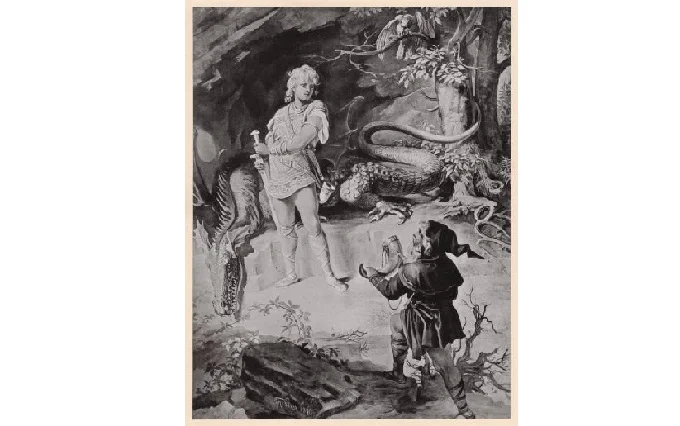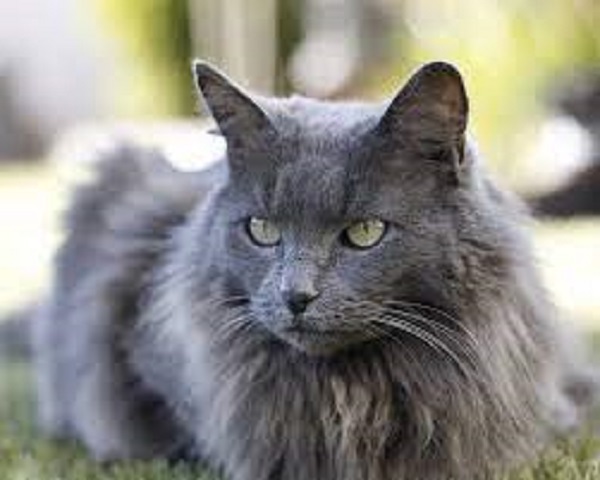Who are the Nibelungs and what do cats, treasure and royal dynasty have to do with it?

It’s no mistake whoever says that Nibelungs are cats of rare beauty, and right are those who remember the dwarfs guarding the treasure or the descendants of the brave Siegfried, the hero of the Germanic epic.
Nibelungs are remarkable because they are ambiguous. Of course, their role in European mythology, even if the “reputation” of the term was badly spoiled in their time by the ideologists of German imperialism.
Who are the Nibelungs?
The first thing that comes to mind is ‘The Song of the Nibelungs,’ a medieval epic poem that tells the story of Siegfried, the hero of ancient legends, against the background of another story – the fall of the Burgundian royal house. The work was written in the early 13th century by an unknown author and enjoyed enormous popularity, becoming akin to the ancient Greek Iliad. The work covers contemporary events and tales from antiquity far removed even for the author: much of the “Song of the Nibelungs” has existed in Germanic and Scandinavian folklore for eight centuries.
Even earlier stories of the Nibelungs were told in the Icelandic sagas, which had a great influence on the Song of Songs: the Elder Edda, the Younger Edda, the Saga of Volsung, and many others. This mixture of folk tales, events from the early Middle Ages, and myths about legendary and historical rulers had a curious effect. On the one hand, the “Song of the Nibelungs” was once seen as a complete historical document, which is why it was copied and rewritten many times and has thus survived to this day; on the other hand, it does not provide an opportunity to clarify very specific questions such as who in the Middle Ages was called a Nibelung.
According to Germanic epos, this name was given to Siegfried, who managed to become the possessor of the untold treasure of the Nibelungs. After him, the names of his subjects were also called Nibelungs. Or it might have been an alternative name for the Burgundians whom Siegfried came to in the first part of the story to take the beautiful Kriemhild as his wife. By the way, one of the main characters in the epic, King Gunther of the Burgundians, has a very real historical prototype – King Gundahar, under whom the Huns defeated the Burgundians.
Attila, the leader of the Huns, also figures in the Song as Etzel and becomes Krimhild’s second husband.
The Nibelung Dwarfs

In the ancient Norse epic, the Nibelungs are dwarves who mine for gold in the underworld, Nibelheim. They are also custodians of the wealth that their ancestors have accumulated since antiquity. Details and variations abound: for example that these dwarf dwarves are descendants of the legendary Scandinavian king Nibelung, and the treasure is guarded by the dragon Fafnir, who in his human, the original form was human, the son of the sorcerer Hreidmar.
After obtaining the treasure from its guardian, the dwarf Andvari (his other name is Alberich), Hreidmar is killed by Fafnir, who turns into a serpent and guards his prey. Incidentally, we must not forget the magic ring of Andvari – which gives power over the world and is simultaneously cursed: anyone to whom it passes is doomed. The dragon dies at the hand of Sigurd-Siegfried, who, bathed in dragon blood, becomes almost invulnerable: the leaf that falls between his shoulders leaves the Achilles’ heel, which will later lead to the hero’s death.
Siegfried, it is true, will be regarded as the richest man in the world who has inherited the treasures of the Nibelungs until his death. The name of this “little people” has traditionally been linked to the German nibel and the Old Icelandic nifl (“mist”). In other words, Nibelungs in medieval storytelling were mysterious “beings of the mist.” The dwarfs lived in the lands along the banks of the Rhine, where they stored their treasure, but even then, all is not so clear.
What about the treasure of the Nibelungs?
According to Nordic and Germanic mythology, the treasure of the Nibelungs has never been found. The “Song” tells how Hagen, who killed Siegfried, hid the gold somewhere near the Rhine. The image of the treasure not yet found also stirred the imagination, especially if it concerned familiar, close places. It is also possible that later rumors about hidden or lost treasure were superimposed on the retelling of ancient legends – how many kings of the past were suspected of similar manipulations with gold?
By a strange (or, on the contrary, legitimate) coincidence, there are myths about the “gold of the Reich” because the epos of the Burgundian rulers did not play a minor role in shaping the ideology of German national socialism.
Then, in the 19th century, renewed interest in the ancient Song of the Nibelungs led to the appearance of Richard Wagner’s famous tetralogy Der Ring des Nibelungen. The four operas, written between 1848 and 1874, strongly influenced the philosophy of the superhuman and, subsequently, the superhuman race. Since the second half of the twentieth century, the Nibelungen have therefore been neglected.
Recent decades have been more conducive to the myths and legends of the Nibelungs, especially since both the interpretations of ancient works and the variations in which they exist are enough to provide food for both scientific research and creative thought. The idea of the epic of the glorious dynasty of the Burgundians and the Nibelungen need not be reduced to the idea of one nation being superior to another, especially since the concept of the Nibelungen has recently been nicely supplemented.

In 1986 the American cat Siegfried and the cat Brünnhilde, the namesake of the heroes of the saga about the Nibelungs, had kittens, which became the first Nibelungs in the feline form. This is the name of the new breed, a silver-blue feline with a misty coat characterized by loyalty to their owners and love for their home.




